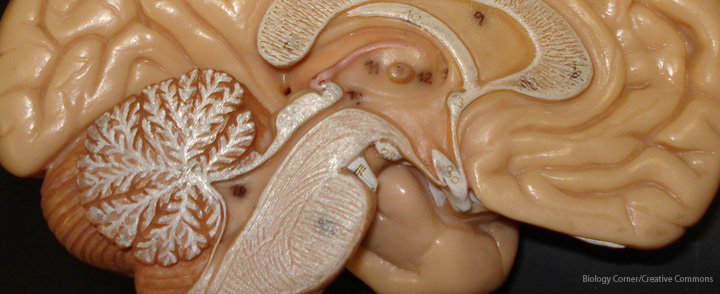By Janis Siegel, Jewish Sound Columnist
This is the second of a two-part column on “BRAINS@BGU,” featuring some of the latest brain research from Ben-Gurion University of the Negev in Israel.
Last year, BGU toured President Obama through its brain research labs after the president launched his BRAIN initiative, Brain Research through Advancing Innovative Neurotechnologies, aimed at mapping the nerve cell network and nerve pathways in the brain to find therapies for diseases like Alzheimer’s, epilepsy, autism, traumatic brain injury and schizophrenia.
In 2014, three BGU doctors, Israel Sekler, Ilya Fleidervish, and Michael Hershfinkel from the department of physiology and cell biology, won a grant from the German-Israel Project Cooperation to research the connection between mitochondria, memory and brain disorders in a joint project with scientists in Germany.
• • •
When the blood-brain barrier was discovered more than 100 years ago, researchers began to understand how it protects the human brain and spinal cord by filtering out many foreign substances from the blood that could disrupt the brain’s balance.
Today, however, as chronic neuro-degenerative and brain diseases rob more and more patients of their mental health and motor skills, scientists like Prof. Alon Friedman in Ben-Gurion University’s department of physiology and neurobiology and the Ziotowski Center for Neuroscience there are looking for breaches in the barrier that may be the direct cause of many debilitating conditions.
“Dysfunction of the BBB occurs during numerous common neurological diseases, including stroke, epilepsy, trauma, tumors, and infectious and degenerative diseases,” wrote Friedman in the article “Blood-Brain Barrier Breakdown and Blood-Brain Communication in Neurological and Psychiatric Diseases.”
“Transport across the blood-brain barrier is tightly regulated by at least four different cells that comprise the brain microvasculature….Thusly, essential nutrients are delivered, waste products removed, and entry of potentially toxic or neuro-active agents and pathogens is severely restricted.”
Through his experiments, Friedman has been searching for clues to the onset of epilepsy after brain trauma, focusing on how the brain’s electrical activity, structure and function changes.
“The brain and spinal cord, the central nervous system, are the control centers of the body generating central programs and strategies, processing sensory input, regulating motor output, and coordinating many of the individual and concerted activities of tissues,” Friedman wrote.
Friedman was a member of the group of doctors that used MRI technology to test former Israeli Prime Minister Ariel Sharon’s brain responses during his eight-year, medically induced coma.
Today, Friedman’s team uses neurophysiological recordings of brain activity and MRIs to study a patient’s brain function and structure. What they found is that while blood-brain barrier dysfunction has long been associated with brain diseases, this recent research suggests that dysfunction also plays a role in the development of those diseases.
In another BGU department, Dr. Golan Shahar investigates the connection between stress, the onset and progression of chronic disease, and self-limiting behaviors.
Shahar is the director of the Center for the Advancement of Research on Stress Related Disorders in the department of psychology. In his Stress, Self, and Health Lab, researchers observe the effects of self-regulated patient strategies on physical and mental illness, particularly depression.
“Over the last 50 years, chronic diseases have steadily overtaken acute medical conditions as the primary cause of disability and use of health services in the United States,” writes Shahar in “The Handbook of Behavioral Medicine” (Makovsky, 2014, Wiley & Sons).
Although much of his latest research, including a 2014 study, looks at the effects of war, terrorism, and violence on Israeli citizens, two of Shahar’s 2012 studies look specifically at chronic pain and coping strategies.
In “Does War Hurt? Effects of Media Exposure After Missile Attacks on Chronic Pain,” published in the Journal of Clinical Psychology in Medical Settings, Shahar and colleague Dr. Sheera Lerman found that exposure to media coverage of terrorist missile attacks increased pain levels in subjects already having chronic pain.
In another study that same year, “The Personification of Chronic Physical Illness: Its Role in Adjustment and Implications for Psychotherapy Integration,” Shahar and Lerman found that chronic pain patients who assigned human characteristics to their physical illnesses were better at managing illness-related emotional distress and disability.
They recommended that the technique be added to pain treatment plans.
“Stress is thought to influence health indirectly by both promoting behavioral coping responses detrimental to health and by activating physiological symptoms,” wrote Shahar. “Prolonged or repeated activation of these symptoms is thought to place a person at risk for a range of physical and psychiatric disorders.”
Longtime Jewish Sound correspondent and freelance journalist Janis Siegel has covered international health research for SELF magazine and campaigns for Fred Hutchinson Cancer Research Center.
